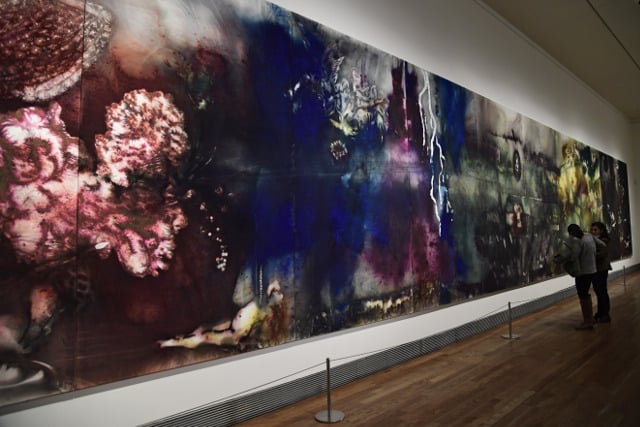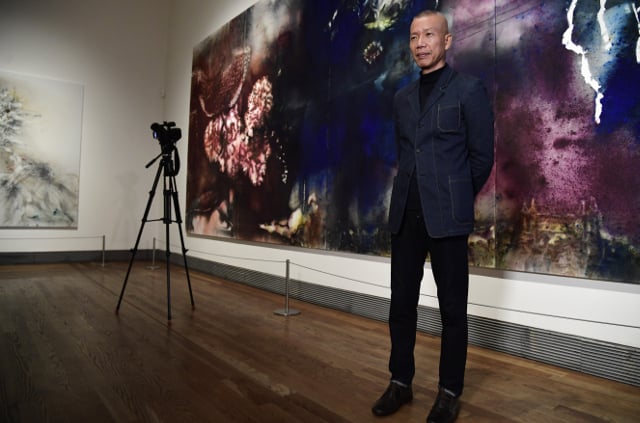Better used to the work of long-dead painters, this is the first time that the museum has welcomed an artist-in-residence, whose internationally-acclaimed contemporary work stands in stark contrast to the centuries-old masterpieces normally on show.
In his exhibition, some of which was produced on-site using his trademark gunpowder, Cai sought inspiration from famous artists such as El Greco, Spain's Francisco Goya and Diego Velazquez, as well as other painters in the collection like Peter Paul Rubens.
The result? A literal explosion of colour and darkness that reveals silhouettes, faces and landscapes, at times obvious and imposing, other times small and discreet.
It's a “dialogue between today's art and the art of the past,” the 59-year-old told reporters.
Cai makes his work by sprinkling gunpowder over his canvases and over stencils of whatever scene or figure he wants to create or re-create, sometimes mixed with colour.
Then he sets fire to the powder. Sometimes, he says, he covers the canvas and gunpowder with cardboard and bricks to make the explosion more powerful.

Two women look at Cai Guo-Qiang's “The Spirit of Painting”. Photo: Javier Soriano/AFP
Valencia gunpowder 'really powerful'
For the eight works created on-site at the Prado, he used gunpowder from a company in the eastern region of Valencia known for its annual, firecracker-mad Fallas festival — and that gave him a few scares.
“Valencia gunpowder is really powerful, really strong,” he said, smiling.
IN PICTURES: Valencia's spectacular festival of fire, Las Fallas
Cai only finished his last, 18-metre-long (59-foot-long) work of art called “The spirit of painting” on Monday evening, which explained the lingering smell of gunpowder.
A burst of colours and darkness, the painting re-creates classic scenes or figures from past artists — but with a modern twist.

Cai Guo-Qiang standing in front of “The Spirit of Painting” at the Prado. Photo: Javier Soriano/AFP
Goya's “The Naked Maja,” an image of a reclining Venus in the nude, now appears at the top of the canvas pulled by a plane flying through a brief burst of light, as if on an advertising banner.
Rubens' “Diana and her Nymphs surprised by Satyrs,” which features what is considered one of the most sensual nudes in the Flemish artist's entire oeuvre, also appears in Cai's 10-canvas painting.
Above the classic, stencilled scene appear stencils of trouser zippers opening up — an illustration of “carnal desire,” says Cai.
The exhibition is on until March 4 next year.



 Please whitelist us to continue reading.
Please whitelist us to continue reading.